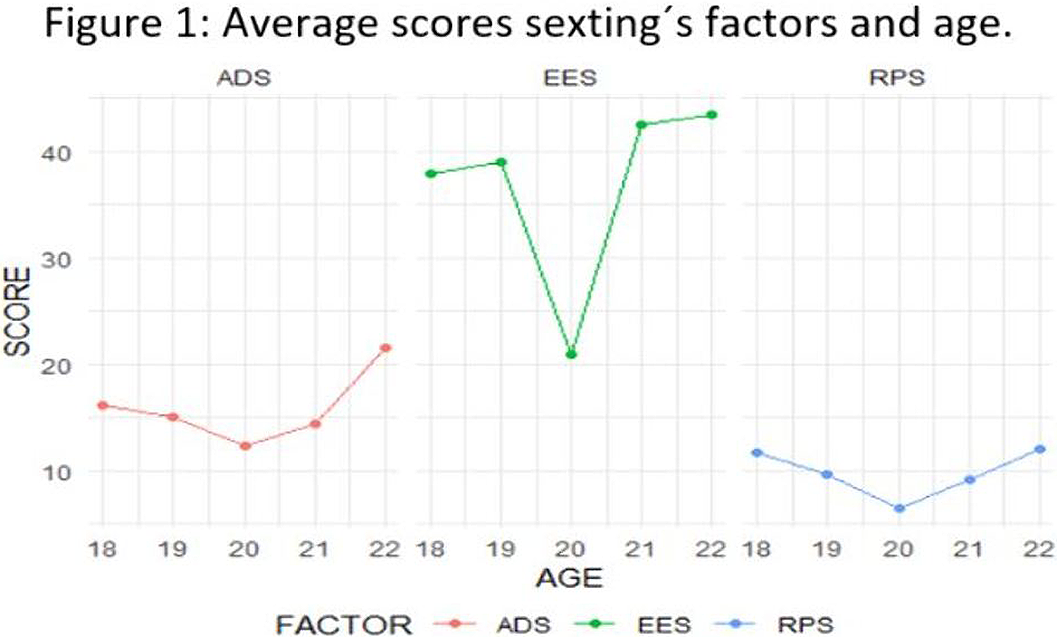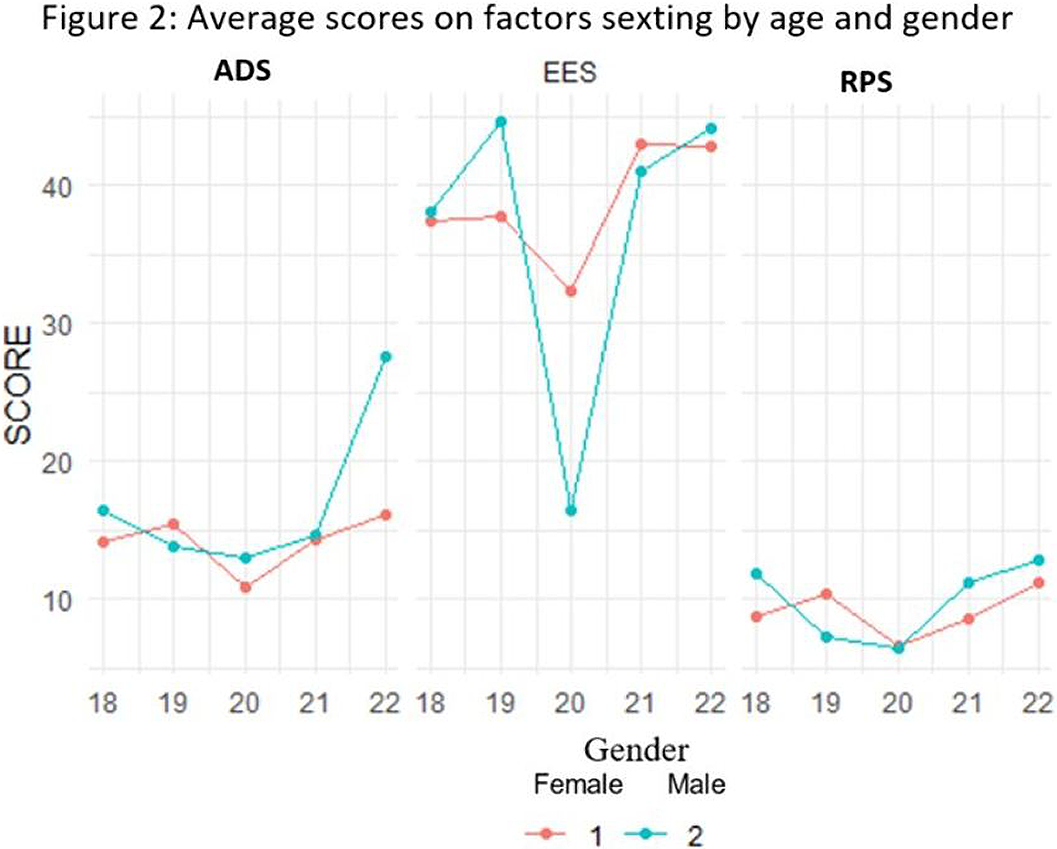Article contents
Sexting in young university of the colombian caribbean, a comparative study between male and female
Published online by Cambridge University Press: 13 August 2021
Abstract
Sexting is sending / forwarding erotic-sexual content voluntarily through technological devices and / or the internet. (Fleschler-Peskin, 2013). Real Participation (RPS), Active Disposition (ADS) and Emotional Expression (EES) was studied.
Compare sexting in two groups of participants: female and male
Comparison of data means measured by the Cronbach alpha sexting behavior scale α = 0.92, (Chacon-Lopez, et al, 2016). Sample N = 900 (447 female and 453 male)
The ADS and RPS decrease between 18 to 20 years old and increase between 20 to 22 years old. EES decreases when increasing age, except in 20 years old. Applying multiple regression analysis, control variable sex and reference group age 18 old, presents statistically significant difference, excepting 19 years old in EES and 22 years old in RPS. (Figure 1)
Comparing age and gender, ADS men present higher levels than women, excepting 19 years old. EES and RP, no significant differences are observed. Comparing women’s mean show lower AD levels than men with Cohen’s effect size d = 0.62, (Cohen, 1988). Related to PRS averages, women present lower levels than men without statistically significant differences. Comparing means, women show lower ADS levels than men effecting d Cohen d = 0.46, (Cohen, 1988). (Figure 2)
Evidence difference between men and women, in ADS and EES, without pattern associated with age, young men and women sexting
- Type
- Abstract
- Information
- European Psychiatry , Volume 64 , Special Issue S1: Abstracts of the 29th European Congress of Psychiatry , April 2021 , pp. S389 - S390
- Creative Commons
- This is an Open Access article, distributed under the terms of the Creative Commons Attribution licence (http://creativecommons.org/licenses/by/4.0/), which permits unrestricted re-use, distribution, and reproduction in any medium, provided the original work is properly cited.
- Copyright
- © The Author(s), 2021. Published by Cambridge University Press on behalf of the European Psychiatric Association
- 1
- Cited by





Comments
No Comments have been published for this article.